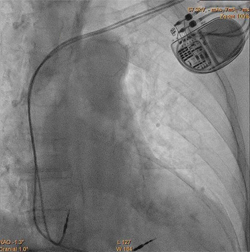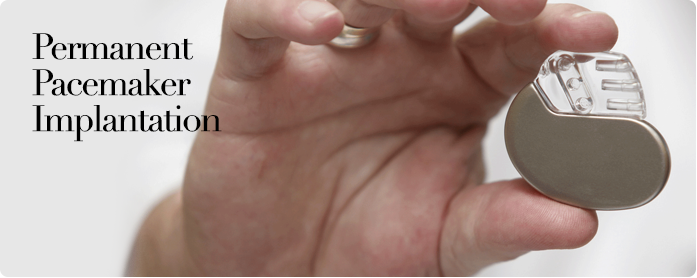| A pacemaker is an electronic device which can sense the heartbeat and put out electrical pulses to stimulate the heart to beat when its rate falls below a certain set rate. It consists of wires (leads) and a battery (pulse generator). Permanent pacemakers are implanted in patients with low heart rates and symptoms of giddiness, loss of consciousness or breathlessness. |
|
| Permanent pacemaker implantation is a minor operation performed under local anesthesia with or without conscious sedation. The pacemaker is implanted in the upper chest below the collar bone. A small incision is made and the lead is introduced through a vein in the upper chest area. Using X rays, the lead is guided into the heart chamber and fixated in a stable position. One or two leads may be implanted in this way. Single chamber pacemakers have only one lead while dual chamber pacemakers have two leads. The lead/s are connected to the pulse generator at the other end. A small pocket is made under the skin and the lead/s and pulse generator are placed in this pocket. The pocket is closed by stitching up the incision. A sterile dressing is placed over the incision. |
|
| Pacemaker batteries usually last 5-10 years. When the battery is depleted, the old pulse generator is replaced with a new one. An incision is made over the old one, the lead/s are disconnected from the pulse generator and connected to the new one and the incision is stitched up again. |
|
 |






